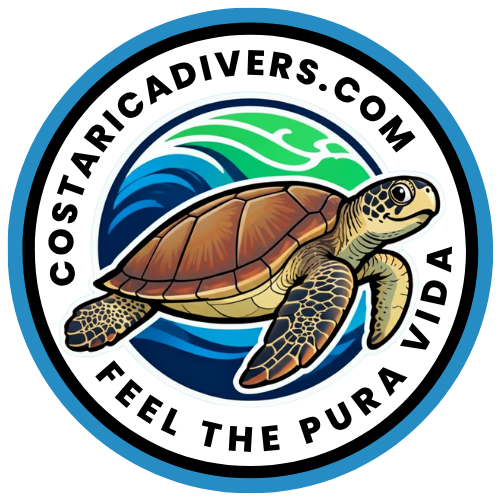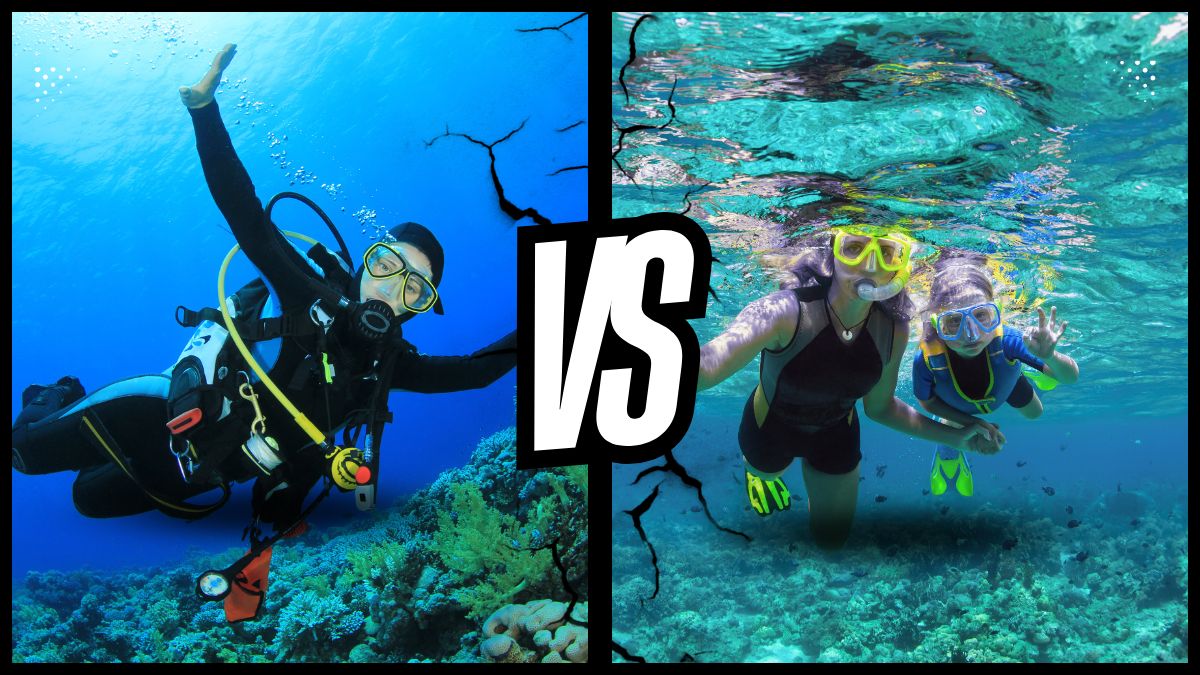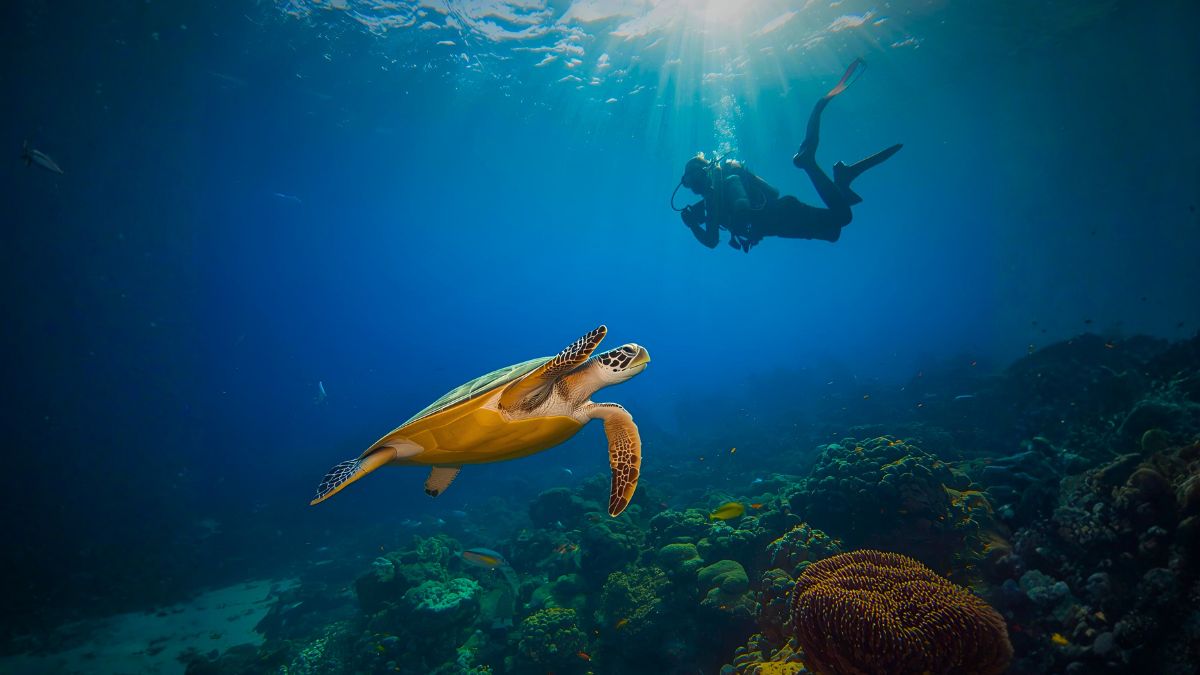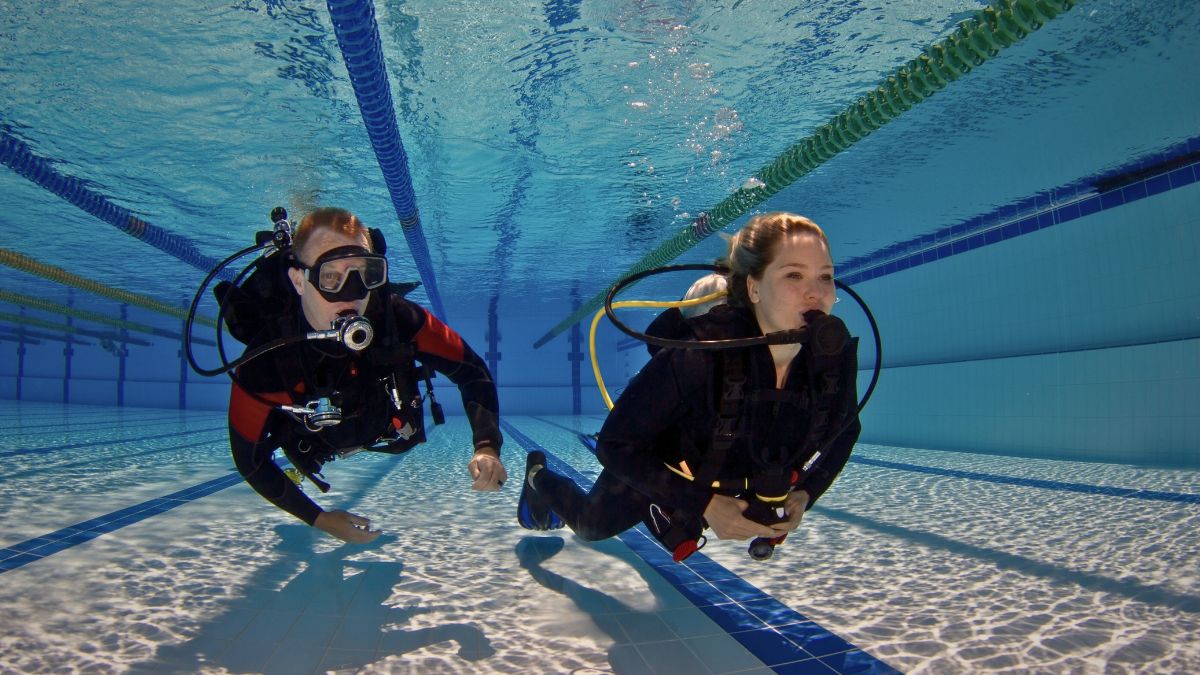Learning to swim is one of the most valuable life skills you can acquire. It keeps you safe around water, opens up endless recreational opportunities, and provides a full-body workout that benefits your physical and mental health.
Whether you’re an adult who never learned as a child or a parent looking to teach your kids, the good news is simple: anyone can learn to swim at any age. I’ve watched countless students transform from nervous beginners who won’t even dip their toes in the shallow end to confident swimmers gliding across the pool.
The journey takes patience, practice, and the right approach, but it’s absolutely achievable. This complete guide will walk you through everything you need to know about learning to swim, from overcoming your fears to mastering basic strokes.
Did you know? Adults can learn basic swimming skills in just 20-30 hours of instruction, typically spread over 2-3 months. That’s less time than it takes to binge-watch most TV series!
Why Learning to Swim is Important
Swimming isn’t just about splashing around on vacation. It’s a fundamental skill that serves multiple purposes throughout your life.
Safety and Life-Saving Benefits
Drowning is one of the leading causes of accidental death worldwide, particularly among children. Knowing how to swim drastically reduces this risk for you and your family. When you can swim, you’re protecting yourself and potentially able to help others in emergency situations.
Health and Fitness Advantages
Swimming provides one of the most complete workouts available. The CDC confirms that swimming improves cardiovascular health, builds muscle strength, and enhances flexibility while putting minimal stress on your joints. A 154-pound person burns approximately 255 calories in just 30 minutes of leisurely swimming. Unlike running or weightlifting, swimming engages nearly every major muscle group simultaneously.
Regular swimming reduces the risk of chronic illnesses, improves mood, and enhances sleep quality. The rhythmic breathing and repetitive movements create a meditative effect that reduces stress and anxiety.

Opens Doors to Water Activities
Once you know how to swim, an entire world of water-based activities becomes accessible. Snorkeling, surfing, kayaking, paddleboarding, and water skiing all require basic swimming ability. And here’s something many people don’t realize: you don’t need to be an Olympic swimmer to enjoy scuba diving.
One of the most common misconceptions is that you must be an excellent swimmer to scuba dive. This simply isn’t true. While basic water comfort is essential, scuba diving relies on equipment and techniques quite different from traditional swimming. Even people with disabilities can successfully learn to scuba dive with proper training and support. The key is feeling comfortable in water and having basic swimming skills, not competitive-level ability.
Overcoming Fear of Water: Mental Preparation
Let’s address the elephant in the room. If you’re an adult learning to swim for the first time, there’s a good chance you feel nervous or even frightened about being in water. This is completely normal and nothing to be ashamed of.
Understanding Aquaphobia and Water Anxiety
Fear of water, known as aquaphobia, affects millions of people. Often, this fear stems from traumatic childhood experiences. Maybe you nearly drowned, someone pushed you into water unexpectedly, or you witnessed a frightening incident. Sometimes the fear develops without any specific trigger.
The truth is that as humans, we’re land creatures. Water is not our natural environment. Whether you’re learning to swim or preparing for scuba diving, you’re stepping outside your comfort zone. Acknowledging this fear is the first step toward overcoming it.
Psychological Barriers in Adults vs. Children
Children and adults approach water fear differently. Kids are often more adaptable and less likely to overthink the process. They’re comfortable with being uncomfortable because they’re constantly learning new things.
Adults bring years of accumulated fears and a well-developed imagination of what could go wrong. We’re also more self-conscious about appearing vulnerable or incompetent. The upside? Adults have better focus, can follow complex instructions more easily, and possess greater determination once they commit to learning.
Practical Tips for Building Water Confidence
Start small. You don’t need to jump into the deep end on day one. Begin by:
- Sitting on the pool edge with your feet in the water
- Walking in the shallow end where you can easily touch the bottom
- Splashing water on your face and arms to get accustomed to the sensation
- Practicing breath control outside the pool first
- Setting small, achievable goals for each session
Building confidence takes time. Some people feel comfortable after a few sessions, while others need weeks or even months. Both timelines are perfectly acceptable. Progress at your own pace.
Essential Swimming Equipment for Beginners
You don’t need much to start learning to swim, but a few key pieces of equipment can make the process easier and more comfortable.
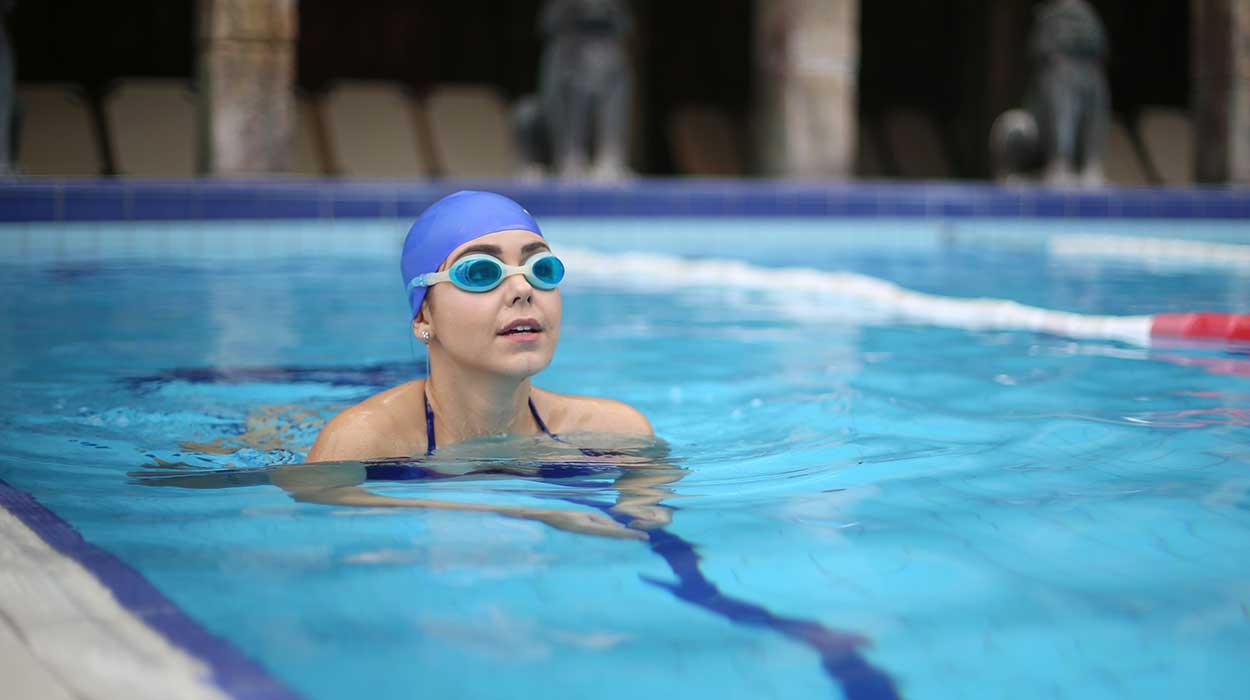
Goggles
Goggles are not mandatory but highly recommended. They protect your eyes from chlorine and allow you to see clearly underwater, which builds confidence. Look for goggles that create a comfortable seal around your eyes without feeling too tight. Try them on before purchasing. Press them gently against your face without using the strap. If they stay in place for a few seconds, the fit is good.
Kickboard
A kickboard is a flat, buoyant board that supports your upper body while you practice kicking. It’s invaluable for beginners because it lets you focus on leg technique without worrying about staying afloat. Most public pools provide kickboards for free use.
Swim Cap (Optional)
A swim cap keeps hair out of your face and reduces drag in the water. While not essential for learning, many people find it more comfortable, especially those with longer hair.
Proper Swimwear
Choose swimwear that fits well and allows freedom of movement. For men, swim trunks or jammers work well. For women, a one-piece suit or athletic swimsuit provides better support than bikinis during active swimming.
What You DON’T Need as a Beginner
Avoid relying on flotation devices like water wings or inflatable rings. While they might make you feel safer initially, they create a false sense of security and can actually delay learning proper swimming technique. Once you remove them, you’re back to square one.
Fun fact: The earliest swimsuits were made from wool in the 1800s. Imagine how heavy and uncomfortable those became when wet! Modern synthetic fabrics are specifically designed to reduce drag and dry quickly.
Should You Learn to Swim Alone or With an Instructor?
This is one of the most important decisions you’ll make in your swimming journey.
Benefits of Professional Instruction
Working with a certified swim instructor offers tremendous advantages. A qualified teacher can:
- Assess your specific needs and fears
- Correct your technique in real-time before bad habits form
- Provide immediate feedback and encouragement
- Ensure you practice in a safe, controlled environment
- Teach proper breathing techniques from the start
- Progress you through skills in the optimal sequence
Professional instructors have seen every type of beginner and know exactly how to adapt their teaching to your learning style. They can identify subtle technique issues you’d never notice on your own.
When Self-Teaching is Appropriate
Some people do successfully teach themselves to swim, particularly if they already feel comfortable in water and are simply refining their technique. Self-teaching works best for:
- People with some water experience who want to improve specific skills
- Individuals learning in a controlled environment with lifeguards present
- Those who can’t access affordable instruction
- People supplementing formal lessons with additional practice
Group Lessons vs. Private Lessons
Group lessons cost less and provide social motivation. You’ll see others at your skill level, which can be reassuring. The instructor’s attention is divided among multiple students, though.
Private lessons are more expensive but offer personalized attention. Your instructor can focus entirely on your specific challenges and progress at your exact pace. For adults with significant water fear, private lessons often prove more effective.
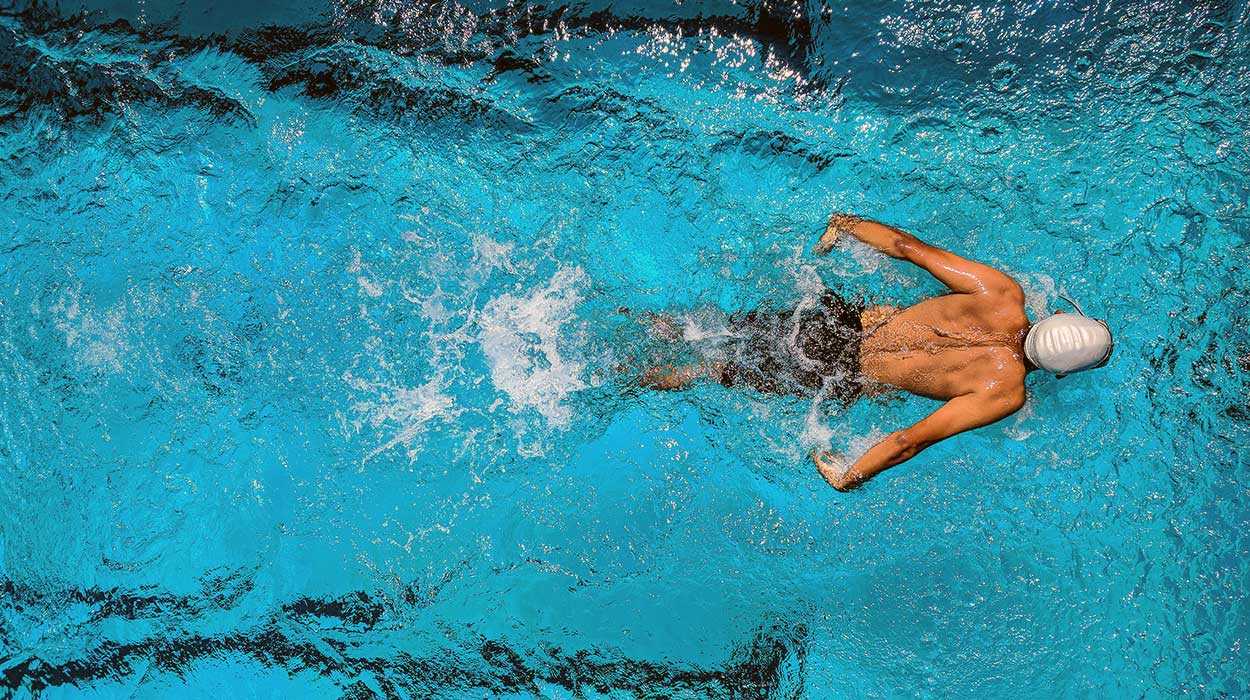
Learning Timeline Expectations
How long does it take to learn to swim? Most adults acquire basic swimming skills within 20-30 hours of instruction, typically spread over 2-3 months with weekly lessons. If you practice 2-3 times per week, you might achieve water confidence even faster.
For adults with water fear, the timeline extends. Overcoming aquaphobia and building deep water confidence might take 6-12 weeks before you even begin learning strokes. This is completely normal. You’re not just learning physical skills, you’re rewiring deep-seated beliefs about water and safety.
Children often learn faster due to their adaptability and lack of fear, though younger kids (under age 5) may need longer to develop the coordination required for proper technique.
Step-by-Step: How to Learn to Swim for Beginners
Now we get into the practical techniques. Learning to swim follows a natural progression, with each skill building on the previous one.
Step 1: Getting Comfortable in Water
Before you can swim, you must feel comfortable simply being in water. This foundational step cannot be rushed.
Entering and Exiting the Pool Safely
Always enter the pool using the ladder or steps. Never jump or dive until you’re a confident swimmer. Practice stepping in and out multiple times until it feels natural. Learn to pull yourself out of the pool without using steps. This is an important safety skill.
Standing in Shallow Water Exercises
Begin in waist-deep or chest-deep water. Walk around the pool, feeling the resistance. This helps you understand how your body moves differently in water compared to land.
Splashing Water on Your Face
It sounds simple, but getting your face wet without panicking is crucial. Cup water in your hands and splash it on your face repeatedly. Blink, wipe your eyes, and repeat. This desensitizes you to the sensation.
Submerging Your Face
Take a deep breath, close your mouth, and put your face in the water for 3-5 seconds. Keep your eyes open (goggles help here). Lift your face out, breathe, and repeat. Gradually increase the duration to 10-15 seconds.
Step 2: Mastering Breathing Techniques
Proper breathing is arguably the most important swimming skill. Many beginners struggle with swimming because they never learned to breathe correctly in water.
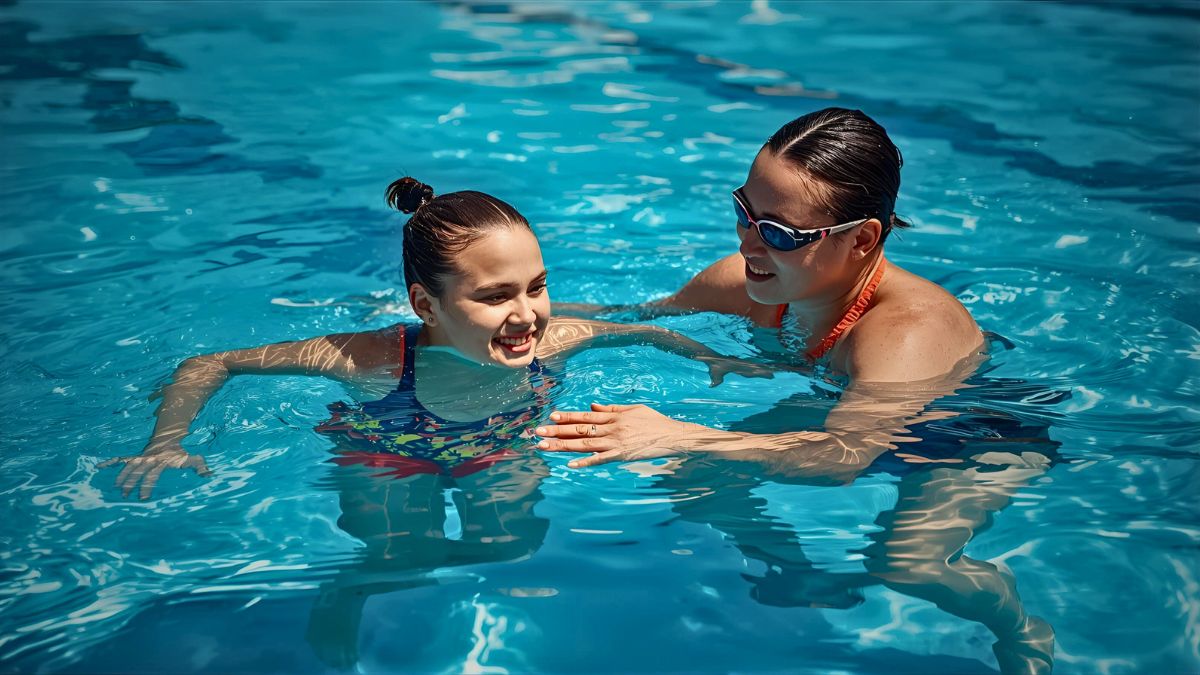
Breath Control Practice
Stand in chest-deep water, holding onto the pool wall or a stable edge. Take a deep breath through your mouth. Put your face in the water and slowly exhale through your nose and mouth simultaneously. You should blow bubbles steadily. Lift your head, inhale quickly through your mouth, and repeat.
Practice this cycle 10-15 times until it becomes rhythmic. The pattern is: face up (inhale), face down (exhale bubbles), face up (inhale). Never hold your breath underwater. Holding your breath causes carbon dioxide buildup and creates that panicky “I’m running out of air” feeling.
Common Breathing Mistakes to Avoid
The biggest mistake beginners make is holding their breath while their face is underwater. This feels intuitive but makes swimming exhausting. You must exhale continuously while submerged and only inhale when your face breaks the surface.
Another common error is breathing too shallowly or too quickly. Take full, deep breaths when your head is above water. Exhale completely underwater so your lungs are empty and ready for the next breath.
Step 3: Learning to Float on Your Back
Floating is a critical safety skill. If you can float, you can rest in water without expending energy.
Body Position and Technique
To float on your back in shallow water:
- Start by sitting in waist-deep water
- Lean back slowly, extending your legs forward
- Arch your lower back slightly and push your chest and hips toward the surface
- Let your arms extend out to the sides or above your head
- Tilt your head back so your ears are underwater
- Relax and breathe normally
The key to floating is relaxation. Tense muscles make you sink. Trust that the water will support you if you stay calm and keep your lungs full of air.
Overcoming Fear of Losing Control
Many people panic when they start to float because they feel like they’re losing control. Have someone support you under your back and neck while you practice. As you relax, they can gradually reduce support until you’re floating independently.
Start with just 5-10 seconds of floating, then stand up. Gradually increase the duration as your confidence grows.
Did you know? Elite synchronized swimmers can tread water for extended periods using the eggbeater kick technique. Some can maintain their position vertically in the water for over an hour without touching the bottom!
Step 4: Treading Water Basics
Treading water keeps your head above water without moving forward. It’s essential for safety in deep water.
Leg Movements (Bicycle Motion)
The most common treading technique uses a bicycle or eggbeater kick. Your legs move in a circular, pedaling motion while you remain vertical in the water. Keep your movements small and controlled. Big, splashy kicks waste energy.
Arm Movements
Your arms scull side to side in front of your body, palms facing down and slightly angled. The motion resembles spreading peanut butter on toast. Small, horizontal movements create downward pressure to keep you afloat.
How Long Beginners Should Practice
In your first attempts, aim to tread water for 30 seconds. This might sound short, but it’s tiring at first. Gradually build up to 2-3 minutes. Treading water for 10+ minutes requires conditioning, so don’t expect marathon sessions immediately.
Step 5: The Flutter Kick
The flutter kick is the foundation of freestyle and backstroke. Mastering this kick is essential before moving to full strokes.
Proper Leg Positioning
Your legs should be straight but not rigid, with just a slight bend at the knee. Point your toes like a ballet dancer. This streamlines your legs and increases propulsion. Your ankles should be relaxed and loose.
Hip-Driven Motion vs. Knee-Driven
The power of the flutter kick comes from your hips, not your knees. Think of your legs as whips. The movement starts at the hip and flows down through your thigh, knee, ankle, and foot. If you bend your knees too much, you create drag and reduce efficiency.
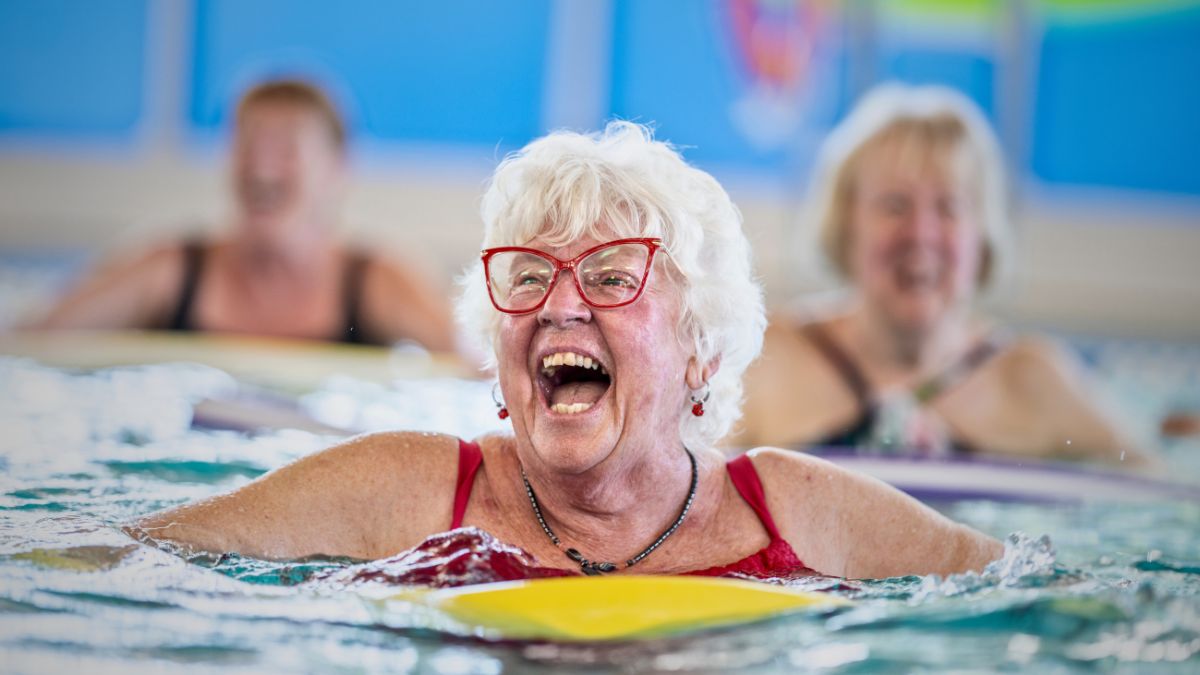
Kickboard Exercises
Grab a kickboard, extend your arms, and place it flat on the water surface. Rest your chest on or just behind the board. Put your face in the water and practice the flutter kick while maintaining steady breathing (exhale underwater, inhale when you turn your head to the side).
Kick from your hips with straight legs, making small, rapid kicks. Your feet should barely break the surface. Practice for 25-50 meters (one or two pool lengths). This builds muscle memory before you add arm movements.
Common Flutter Kick Mistakes
Don’t bicycle kick (circular motion). That’s for treading water, not forward movement. Don’t kick from the knees with bent legs. This looks like doggy paddling and creates excessive drag. Don’t make huge splashes. Kicks should be compact and below the surface for maximum efficiency.
Step 6: Your First Swimming Stroke (Front Crawl/Freestyle)
The front crawl, commonly called freestyle, is the fastest and most efficient stroke. It’s ideal for beginners because the movements are relatively natural.
Why Freestyle is Best for Beginners
Freestyle allows you to breathe to the side while your body remains horizontal and streamlined. Unlike breaststroke, which requires complex timing, freestyle breaks down into simpler components you can practice separately before combining them.
Arm Movement Breakdown
Each arm goes through four phases:
- Reach: Extend your arm forward, entering the water fingertips first about 12-18 inches ahead of your head. Your palm faces down and slightly outward.
- Pull: Once your hand enters, pull it down and back toward your hip, keeping your elbow high. Your hand should pass under your body’s centerline.
- Push: As your hand reaches your hip, push the water back forcefully, accelerating through the finish.
- Recovery: Lift your elbow out of the water first (high elbow recovery) and swing your arm forward to start again. Your hand should swing relaxed and close to your body.
Coordinating Arms and Legs
Here’s where it gets tricky. While one arm pulls, the other recovers. Your legs flutter continuously throughout. The coordination takes practice but eventually becomes automatic.
Start by practicing arm movements while standing in chest-deep water. Then use the kickboard to practice arms without worrying about sinking. Finally, combine everything in shallow water where you can stand if needed.
Adding Breathing to the Stroke
Breathing coordination is the hardest part of freestyle for beginners. The pattern is:
- As your right arm finishes its pull and recovers, rotate your head to the right
- Your face should stay partially in the water (don’t lift your whole head)
- Take a quick breath as your mouth clears the water
- Return your face to the water, exhaling as your arm enters ahead
Breathe every 2-3 strokes initially. As you improve, you can breathe less frequently. Practice breathing to both sides to develop balanced technique.
Complete Stroke Integration
Put it all together: flutter kick + alternating arms + side breathing. Don’t expect perfection immediately. Swimming just one pool length with decent technique is a major achievement for your first attempts.
Practice in short bursts. Swim 10-15 meters, rest, analyze what felt right and wrong, then try again. Video yourself if possible, as it reveals technique issues you can’t feel while swimming.
Swimming Lessons for Kids: What Parents Should Know
Teaching children to swim requires a different approach than adult instruction.
Appropriate Age to Start
Children can begin water familiarization as young as 6 months through parent-child classes, though they won’t actually swim at this age. Most experts recommend formal swimming lessons starting around age 4-5, when kids have developed sufficient motor skills and can follow instructions.
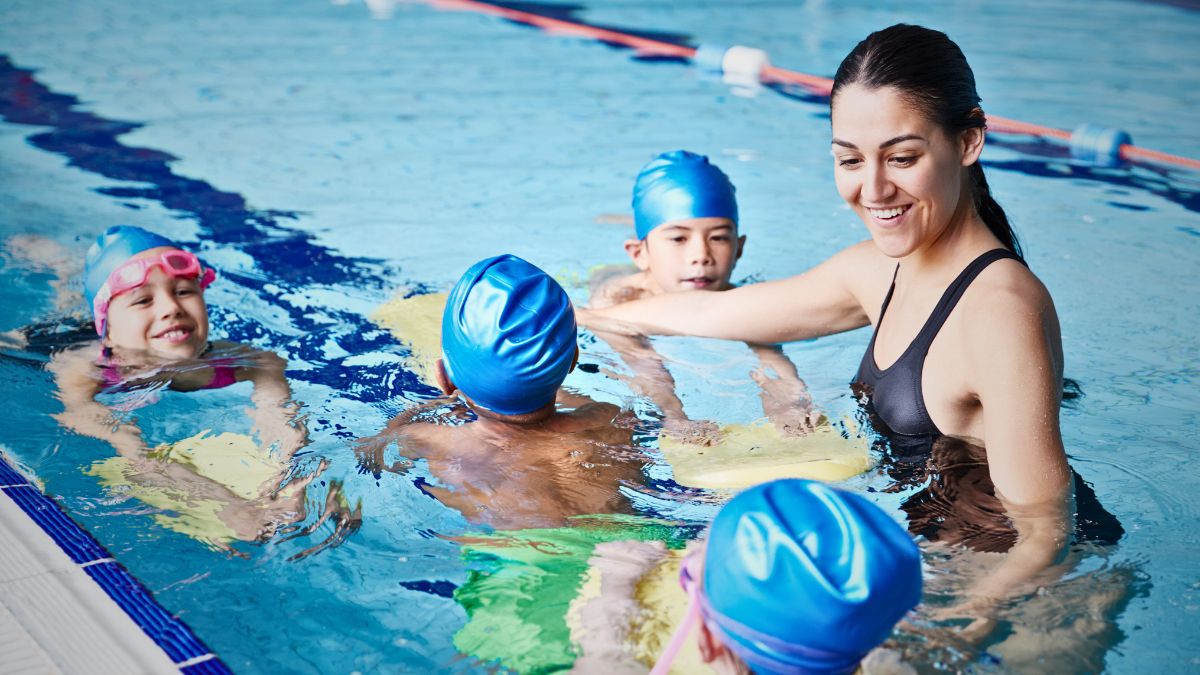
Making Swimming Fun for Children
Children learn best through play. Effective instructors use games, songs, and toys to make lessons enjoyable rather than frightening. Turning techniques into games (“blow bubbles like a motorboat” or “reach like a superhero”) keeps kids engaged.
Never force a child into water or use swimming as punishment. This creates negative associations that can last into adulthood.
Safety Considerations
Constant supervision is non-negotiable. Drowning can occur in seconds, even in shallow water. Young children should always wear Coast Guard-approved life jackets in open water until they’re strong swimmers.
Teach children pool rules early: no running on deck, no pushing others, always swim with a buddy, and never swim without adult supervision.
Red Flags in Swimming Instruction
Be wary of instructors who:
- Push children beyond their comfort level too quickly
- Use fear or harsh discipline as motivation
- Promise unrealistic results (“your child will swim in three lessons!”)
- Don’t maintain appropriate instructor-to-student ratios
- Lack proper certifications
Common Mistakes Beginner Swimmers Make
Recognizing these errors early helps you avoid developing bad habits.
Holding Breath Instead of Exhaling Underwater
We’ve mentioned this repeatedly because it’s the most common and problematic mistake. Holding your breath makes swimming exponentially harder. Force yourself to blow bubbles continuously while your face is submerged.
Looking Forward Instead of Down
When swimming freestyle, many beginners lift their head to look forward. This drops your hips and legs, creating drag like an anchor. Keep your eyes focused on the bottom of the pool, only rotating your head to breathe.
Bending Knees Too Much During Kicks
A big, bent-knee kick looks powerful but actually slows you down. Keep legs relatively straight with just a slight knee bend. Generate power from the hips.
Overthinking and Tensing Up
Swimming should feel fluid and relaxed. When you’re tense, your muscles fatigue quickly and your movements become choppy. Take deep breaths, trust your buoyancy, and let your body relax into the movements.
Skipping Floating and Breathing Fundamentals
Eager beginners often want to jump straight to strokes. Resist this temptation. Solid breathing and floating skills make everything else ten times easier. Master the basics thoroughly before advancing.
Progressing Too Quickly
There’s no prize for learning faster than someone else. Swimming safely and with good technique matters far more than speed. If a skill feels uncomfortable or scary, spend more time on it. Rushing leads to poor technique and potential safety issues.
How Swimming Prepares You for Scuba Diving
Here’s where swimming and scuba diving intersect, though perhaps not in the way you expect.
Many people assume you must be an advanced swimmer to scuba dive. This misconception prevents countless people from trying diving when they’re actually quite capable of learning.
The reality is that scuba diving and swimming are different skills. Swimming relies on your own power and breath control to move through water. Scuba diving relies on equipment. Your tank provides air, your BCD (buoyancy control device) keeps you neutrally buoyant, and your fins provide propulsion.
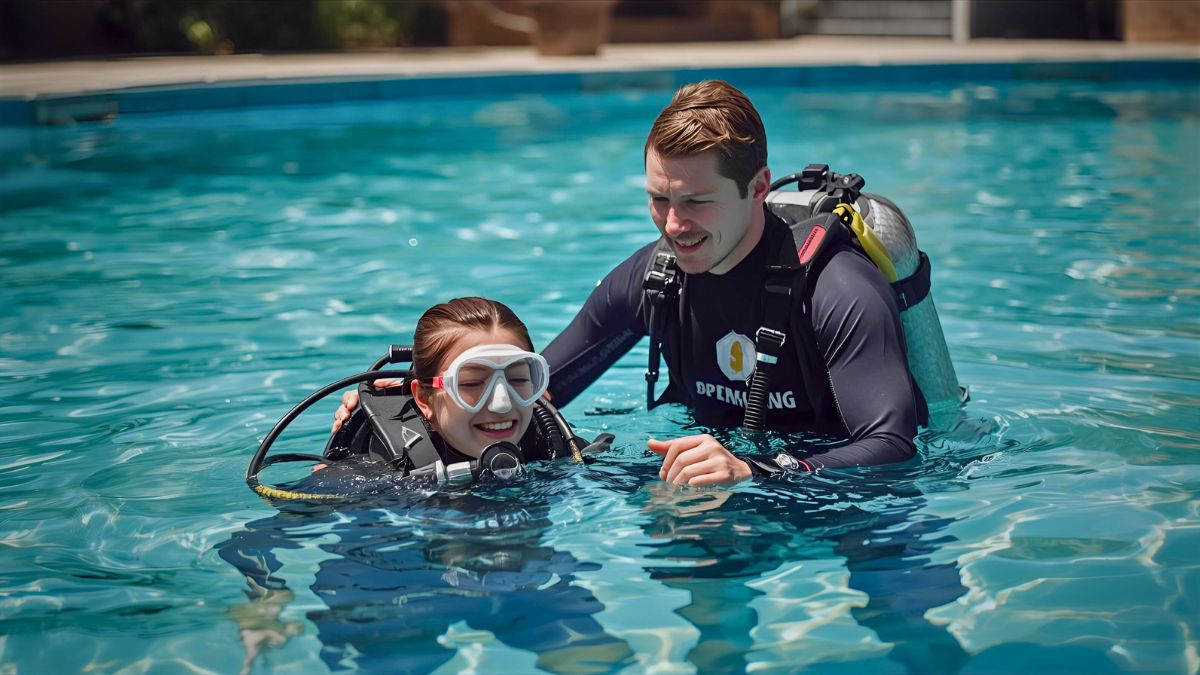
Water Confidence Importance
What diving does require is water confidence. You need to feel comfortable with your face underwater, to remain calm when you can’t immediately stand up, and to trust that you can breathe underwater through your regulator. These are all things you develop through basic swimming practice.
Breathing Control Translation to Diving
The rhythmic breathing patterns you learn while swimming translate beautifully to diving. Scuba divers breathe slowly and deeply through their regulators, similar to the controlled breathing you practice as a swimmer. Many swimming breathing exercises are nearly identical to what dive instructors teach.
PADI Requirements and Swimming Standards
PADI (Professional Association of Diving Instructors), the world’s largest diver training organization, requires students to demonstrate basic water skills before certification. Typically, this means:
- Swimming 200 meters (or 300 meters with mask, fins, and snorkel)
- Treading water or floating for 10 minutes
Notice these requirements don’t demand perfect stroke technique or speed. They simply verify you’re comfortable in water and can keep yourself afloat. Many people who describe themselves as “not strong swimmers” easily meet these standards.
People with physical disabilities can and do become certified divers. With appropriate adaptations and support, individuals using wheelchairs, those with limited mobility, or people with various disabilities successfully enjoy scuba diving. Adaptive diving programs exist worldwide specifically for this purpose.
If you’re interested in exploring underwater adventures but worried about your swimming ability, don’t let that fear stop you. Build basic water confidence through swimming practice, then speak with a dive center about your specific situation. You might be surprised at what’s possible.
How Long Does It Take to Learn to Swim?
We’ve touched on this throughout the article, but let’s address it directly.
Realistic Timeline Expectations
For most adults with no swimming experience:
- 2-4 weeks: Basic water comfort, floating, submerging face
- 1-2 months: Confident treading water, breathing techniques mastered
- 2-3 months: Swimming one full pool length with freestyle stroke
- 3-6 months: Swimming multiple laps comfortably, learning additional strokes
This assumes 1-2 lessons per week plus regular practice sessions. If you practice more frequently (3-4 times per week), you’ll progress faster.
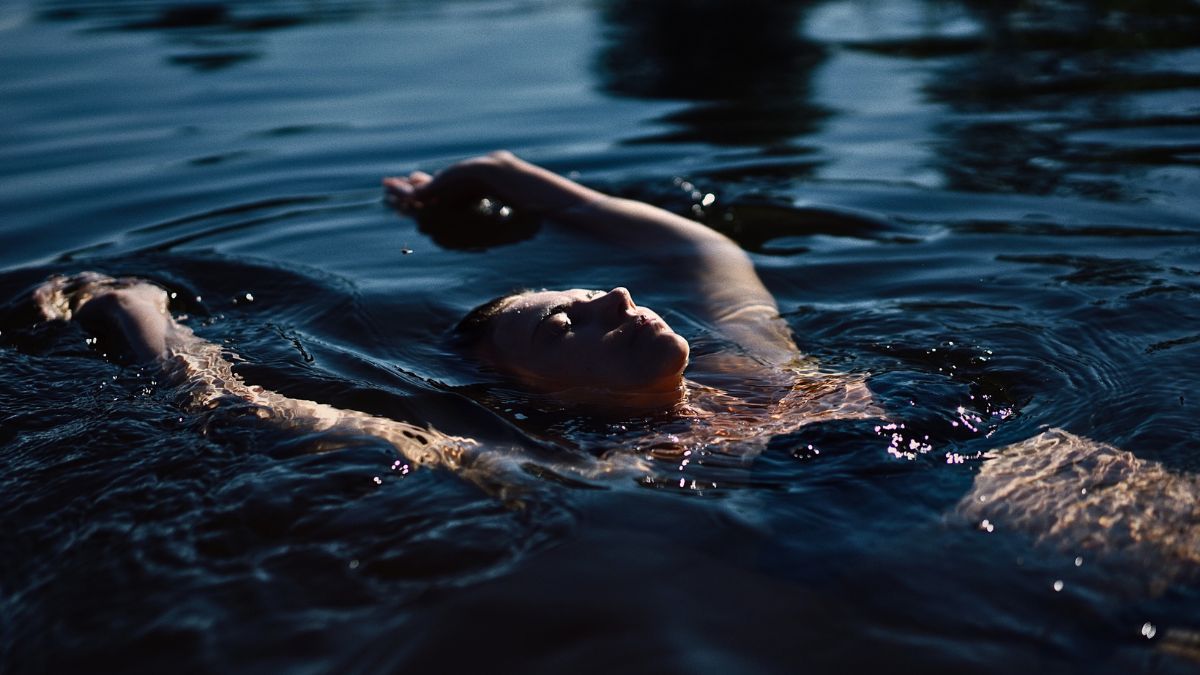
Factors Affecting Learning Speed
Everyone’s timeline differs based on:
- Fear level: Overcoming aquaphobia adds weeks or months to the learning process
- Practice frequency: Two sessions per week yields much slower progress than four sessions weekly
- Physical fitness: Athletic individuals often learn faster
- Age: Younger adults typically progress slightly faster than those over 60, though the difference isn’t dramatic
- Quality of instruction: A skilled instructor accelerates learning significantly
- Previous water experience: Those comfortable in hot tubs or bathtubs adapt faster than people with zero water exposure
Adult vs. Child Learning Curves
Children often learn the mechanics of swimming faster than adults due to fearlessness and flexibility. Adults bring advantages, though: better focus, ability to understand complex instructions, and stronger determination. These factors often balance out, meaning adults can learn just as quickly as kids when properly motivated.
Frequency of Practice Recommendations
For optimal progress, aim for 2-3 practice sessions per week, each lasting 30-60 minutes. Practicing five times weekly offers diminishing returns. Your body needs rest to consolidate new motor skills. Once-weekly sessions make progress frustratingly slow because you forget much of what you learned between sessions.
Consistency matters more than duration. Three 30-minute sessions beat one 90-minute marathon session.
Let’s Recap: Your Swimming Journey Starts Now
Learning to swim is a journey that requires patience, practice, and persistence. But it’s one of the most rewarding skills you’ll ever acquire.
Start by building water confidence gradually. Get comfortable in shallow water, master breathing techniques, and learn to float before attempting strokes. Consider working with a certified instructor, especially if you have water fear. Invest in basic equipment like goggles and a kickboard.
If you’re interested in taking your water adventures further, swimming is the perfect foundation for activities like snorkeling and scuba diving. You don’t need to be a competitive swimmer to explore underwater environments. Basic water confidence and swimming skills are sufficient.
Whether you’re learning to swim for safety, fitness, fun, or as preparation for other water sports, you’re making an investment in yourself that pays lifelong dividends. The water is waiting. Take the first step, and before you know it, you’ll be gliding through the pool with confidence and ease.
Sources used in writing this blog
Centers for Disease Control and Prevention (CDC). “Health Benefits of Water-based Exercise.”
American Red Cross “Swimming and Water Safety Guidelines.”
